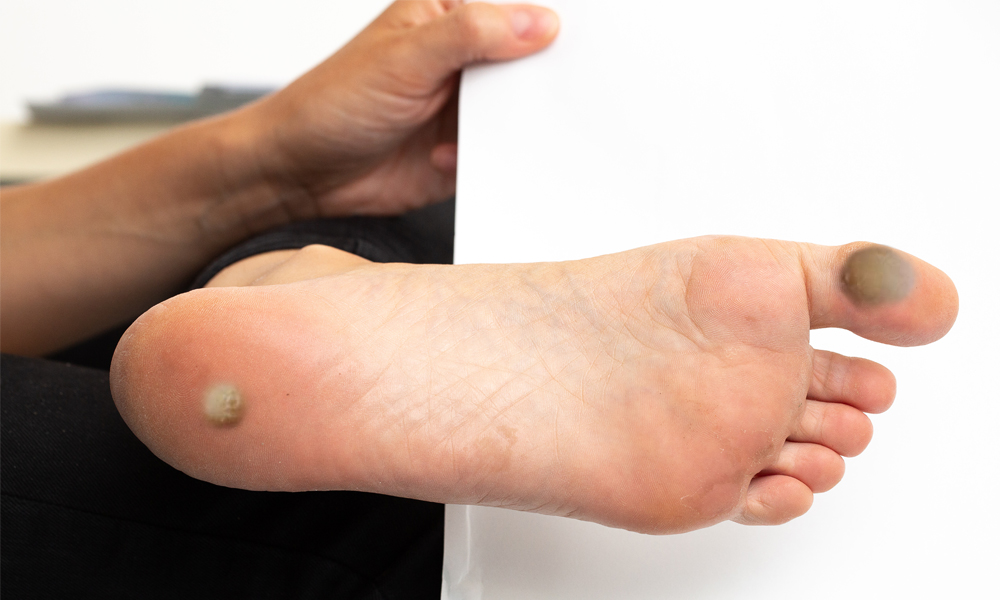-
 Toll Free No 9146-744-744
Toll Free No 9146-744-744 - Appointment
The areas of the foot that do not bear weight, such as the sides, in between, and on top of the toes, are commonly affected by hard corns inflated portions of the skin.
Although corns and calluses are sometimes confused, you can determine them apart by their location. Corns are painful and usually lumpy lesions that develop on pressure sites.
Contrarily, calluses develop on the area of the foot that bears weight and are wider, flatter, and significantly less severe than corn.
Hard corns are tiny, dense patches of skin that typically develop at the tops of toes when the skin is pressed up against the bone. They may experience pain, and even an open wound since their cores are solid.
Soft corns are among the most painful foot disorders. They are distinguished by their softer, rubbery feel and most frequently appear as uncomfortable blisters between the toes due to sweat accumulation. Soft corn can occasionally develop an infection as well.
High heels and improperly fitting shoes are typically the main reason for soft and hard corns and callus development.

Worldwide research and development of minimally invasive surgical methods are being conducted to lessen patient stress and speed recovery. The MIS surgical technique has been utilized by orthopedic and podiatric surgeons to treat interdigital corns on the toes. Patients who have minimally invasive surgery can return home the same day and easily resume their regular daily activities. It has been seen that patients undergoing MIS, recover more quickly and with little to no risk of infection.


The process is carried out under anesthesia, so there is no discomfort while it is being done. A painless, safe, and quick surgery provides relief right away.
Get expert help right away, if the corn is painful or seems inflamed, puffy, or interfering with your everyday activities.
After the corn has been removed, apply foot cream to hydrate the feet. Regular application of such lotions will improve your skin and lower your risk of developing corn.
If corn is not treated, it will continue to penetrate the skin around them, hardening it even more and leaving your feet prone to infections.
The patient can go home the same after surgery. It helps in quick recovery and relieves pain immediately. The patient can start the daily routine right after the surgery.
Some corns require permanent removal through a minimally invasive surgical treatment where the pressure on the underlying bone is decreased.
Uncomfortable shoes and high-heel footwear are frequently to blame for the thick, hard patches of dry skin that accumulate in pressure and friction points on the foot.
Common causes of corns are:
OUR PROCESS IS EASY contact us for More information.
Copyright © 2023 hospione.com - All Rights Reserved | Developed by Digital Marketing StudioGenix LLP